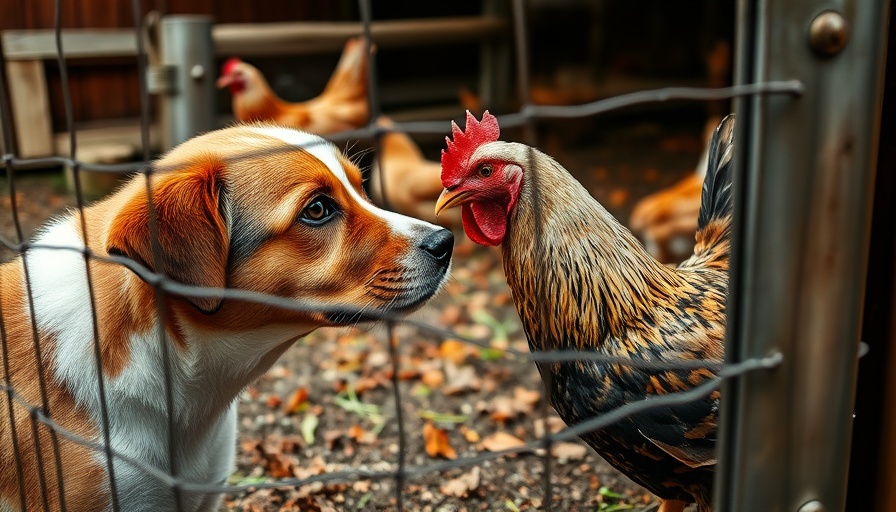
Understanding Bird Flu and Its Impact on Canines
As the world grapples with the implications of avian flu, commonly known as bird flu, dog owners might be wondering about the potential risks for their furry companions. Bird flu, particularly the strain H5N1, is primarily a concern for avian populations but has raised concerns for mammals, including dogs, due to its zoonotic potential. While there have been no reported cases of dogs being infected in the current outbreak, it's essential for pet owners to remain vigilant and informed.
The Spread of Bird Flu and Dogs: What You Need to Know
Bird flu is predominantly spread by migrating birds, and it is known to cause significant mortality rates in some species. According to veterinary experts, dogs have primarily been reported to contract different strains of influenza viruses such as H3N8 and H3N2. These strains, while concerning, are not the same as H5N1, which is more dangerous to a broader range of animals, including domestic cats and farm animals.
Case Study: When a Dog Contracted Bird Flu
In April 2023, a notable incident in Ontario, Canada, raised alarms when a dog died from avian flu after scavenging a deceased infected goose. This tragic case underlines the importance of responsible pet ownership and of keeping dogs away from potentially contaminated wildlife. Although such occurrences are rare, they serve as a reminder of the dangers that lurk beyond our backyards.
How to Protect Your Dog From Bird Flu Risks
Managing your dog's exposure to bird flu is crucial. Here are some practical tips for dog owners:
Avoid RAW Foods: It's prudent to steer clear of feeding your dog raw diets involving poultry or dairy products made from raw milk. Even though the processing could kill the virus, there's still uncertainty regarding the risk involved.
Monitor Bird Activity: Be mindful of where you take your dog for walks. Areas frequented by wild birds can pose as hotspots for potential exposure.
Educate Yourself: Staying updated on local news about avian flu outbreaks can help you make informed decisions about how to protect your pet.
The Broader Animal Impact: Understanding the Virus
Bird flu not only threatens avian species but has also been associated with infections in other mammals, including cats, foxes, and even farm animals. The virus can cause serious illness in cats, often leading to sudden death without prior symptoms. Cats catching ill birds or consuming contaminated raw food are particularly at risk, emphasizing the need for vigilant pet care.
Emphasizing Hygiene and Food Safety
Reducing the risk of avian flu also ties into broader food hygiene practices. Pet owners should employ strict food handling techniques if they opt to serve raw diets to their dogs. Ensuring cleanliness and proper food preparation methods is crucial in safeguarding both pets and household members from potential contamination.
Community Insights: Sharing Knowledge for Safety
As part of the fabric of local communities, pet owners have a role in sharing knowledge about health risks their pets face. Engaging neighbors and fellow dog owners in discussions about avian flu can lead to a greater awareness that helps protect not just individual pets but the community as a whole. Organizing neighborhood pet safety workshops or local events can build a support network where owners can share experiences and strategies.
Future Implications: What Lies Ahead for Pet Owners?
The threat of bird flu, especially as different strains emerge, may compel dog owners to be more proactive about pet health and hygiene. Strategies for monitoring wildlife activity and understanding local health advisories could become routine for conscientious pet parents. As science advances, the hope remains that veterinary medicine will continue to develop responses to potential zoonotic threats, ensuring safety for our beloved pets.
Conclusion: Staying Ahead of the Curve
While the current outbreak has not impacted dogs directly, the proactive steps each dog owner takes can ensure their furry friends remain healthy and safe. Let’s stay informed, share knowledge, and cultivate strong community practices that prioritize the health and welfare of both pets and people.
 Add Row
Add Row  Add
Add 




Write A Comment